Whale Shark Point
Swim with gentle giants at the world's most reliable whale shark encounter site in South Ari Atoll, Maldives
About Whale Shark Point
Whale Shark Point in South Ari Atoll is globally renowned as one of the best places to encounter whale sharks year-round. This marine protected area was established in 2009 to protect these gentle giants and their habitat, offering visitors an unparalleled opportunity to swim alongside the world's largest fish.
What makes this location extraordinary is the high probability of sightings - approximately 80% chance on any given day. The area's unique oceanographic conditions create a nutrient-rich environment that attracts plankton, the whale shark's primary food source. Unlike many other locations where whale sharks are seasonal visitors, South Ari Atoll hosts a resident population that can be observed throughout the year.
The experience of swimming with these majestic creatures in crystal clear waters is truly unforgettable. With proper guidelines in place to ensure responsible interactions, Whale Shark Point offers both snorkelers and divers a chance to witness these magnificent animals in their natural habitat.
Whale Shark Point Quick Facts
- Location: South Ari Atoll (Alifu Dhaalu Atoll)
- Depth Range: 5-30 meters (16-98 feet)
- Visibility: 20-40 meters (65-130 feet)
- Current: Mild to moderate
- Experience Level: All levels (snorkelers welcome)
- Best Time: Year-round (peak sightings May-Nov)
- Protected Area: Since 2009
- Access: Boat trip from nearby resorts/liveaboards
Responsible Encounter Guidelines
Whale sharks are protected in the Maldives. Always follow the Maldives Whale Shark Research Programme guidelines: maintain 3m distance from the shark, don't touch or chase them, and limit groups to 6 people per shark. Flash photography is prohibited.
Whale Shark Encounters
Whale Shark Point offers some of the world's best opportunities to observe these gentle giants in their natural environment. Here's what makes encounters here so special:
Surface Feeding
Whale sharks often feed near the surface, filtering plankton through their gills. This creates perfect snorkeling opportunities as they move slowly just below the water's surface.
Resident Population
Unlike migratory populations elsewhere, South Ari Atoll has a resident group of whale sharks that can be seen year-round, with highest concentrations during the southwest monsoon (May-Nov).
Photo Identification
Each whale shark has unique spot patterns. The Maldives Whale Shark Research Programme catalogs individuals - you might recognize "Foster" or "Ariel" from their database!
Cleaning Stations
Some areas serve as cleaning stations where smaller fish remove parasites from the sharks. These provide amazing opportunities to observe stationary whale sharks.
The Whale Shark Experience
Encountering a whale shark is a highlight of any Maldives holiday. Here's what to expect during your visit to Whale Shark Point:
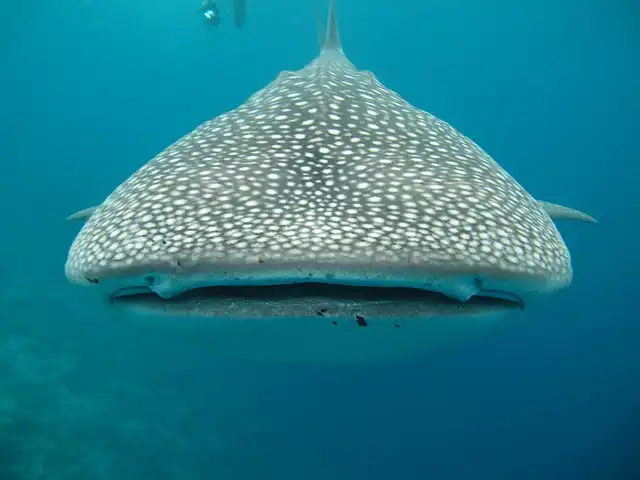
Snorkeling with Giants
Most encounters involve snorkeling as whale sharks often feed near the surface. You'll enter the water when a shark is spotted and swim alongside these magnificent creatures.
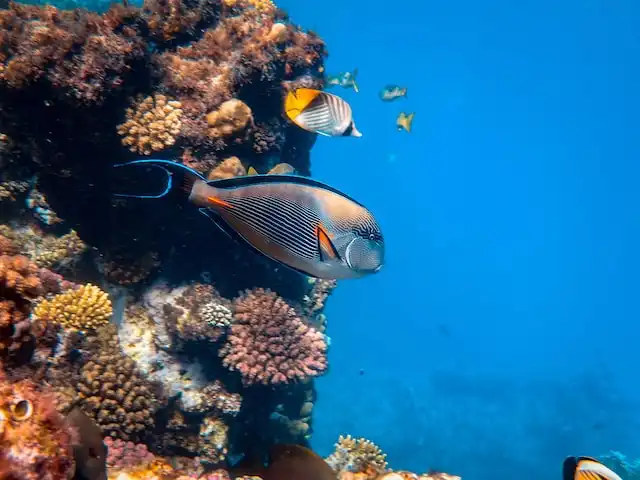
Diving Encounters
While less common, divers sometimes encounter whale sharks at depth, especially at cleaning stations. These encounters allow for longer observation periods.

Rich Marine Life
The area teems with other marine life including manta rays, dolphins, and colorful reef fish. Many trips combine whale shark encounters with other snorkeling spots.
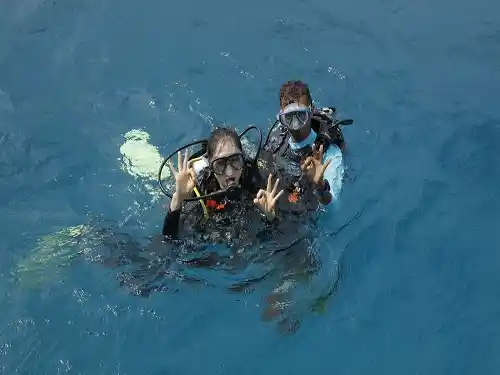
Research & Conservation
Your visit supports ongoing research. Many operators contribute data to the Maldives Whale Shark Research Programme, helping protect these vulnerable species.
Snorkeling at Whale Shark Point
Snorkeling is the primary way to encounter whale sharks in the Maldives. Here's what makes the experience at Whale Shark Point exceptional:
Excellent Visibility
Typical visibility of 20-40 meters allows clear views of approaching whale sharks from the boat before entering the water.
Easy Conditions
Calm seas and mild currents make snorkeling accessible to all skill levels, including beginners and children (with supervision).
Quality Gear
Operators provide high-quality snorkeling equipment including masks, snorkels, fins, and often wetsuits for buoyancy and sun protection.
Photo Opportunities
The clear water and predictable shark behavior create perfect conditions for underwater photography. Many operators offer photo packages.
Marine Life at Whale Shark Point
While whale sharks are the main attraction, the area hosts an incredible diversity of marine species. Here are some highlights:

Whale Shark
The world's largest fish, reaching up to 18 meters (59 feet). Despite their size, they're gentle filter feeders that pose no threat to humans. South Ari Atoll hosts primarily juvenile males (5-8m).

Manta Ray
These graceful giants often share the same waters. Reef mantas (3-5m wingspan) are commonly seen, especially at cleaning stations near the atoll's edge.
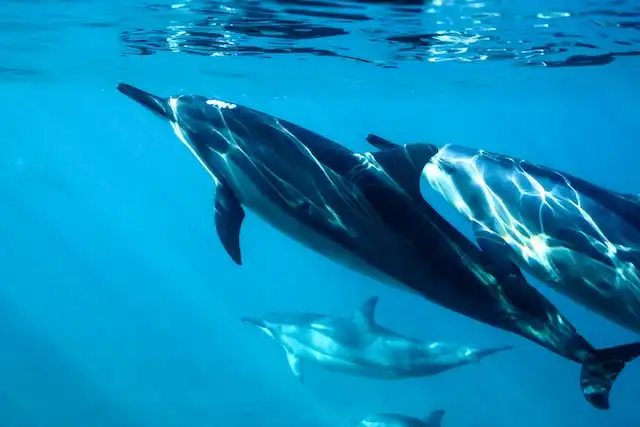
Spinner Dolphin
Pods of acrobatic spinner dolphins are frequently encountered during boat rides to the site. They often bow-ride and perform spectacular spinning jumps.

Reef Sharks
Blacktip, whitetip, and grey reef sharks patrol the area's reefs. While not as large as whale sharks, they add excitement to any snorkel or dive.
Typical Excursion Itinerary
Here's what to expect during a typical whale shark excursion from nearby resorts or liveaboards:
Departure & Briefing
Trips typically depart between 8-9am after a thorough safety briefing that covers encounter guidelines and snorkeling techniques. The boat ride to the area takes 30-60 minutes depending on your starting point.
Search Pattern
The boat follows a search pattern while crew members scan the water from elevated platforms. Spotter planes may assist during peak season. When a shark is sighted, the crew will position the boat for optimal entry.
Snorkeling Encounters
Guests enter the water in small groups when conditions allow. Encounters typically last 10-30 minutes per shark. Most trips aim for 2-3 encounters with different individuals throughout the morning.
Additional Snorkeling
Many trips include stops at nearby reefs or manta ray cleaning stations if whale shark encounters conclude early. This maximizes your time in the water with diverse marine life.
Return & Debrief
The boat returns to the resort or liveaboard by early afternoon. Crews often collect encounter data (photos, location, behavior) to contribute to research efforts protecting these magnificent creatures.
Whale Shark Encounter Guidelines
To ensure safe, sustainable encounters that protect both sharks and snorkelers, please follow these important rules:
No Touching
Never touch, ride, or chase whale sharks. Their skin is delicate and human contact can remove their protective mucus layer, making them vulnerable to infection.
Keep Your Distance
Maintain at least 3 meters (10 feet) from the shark's body and 4 meters (13 feet) from its tail. These distances help prevent accidental contact.
Small Groups
Only 6 snorkelers plus one guide should be in the water with a shark at any time. This minimizes disturbance and ensures quality encounters for all.
Responsible Photography
No flash photography as it may startle sharks. Maintain proper distance even when taking photos - never block a shark's path for a better shot.
Swim Properly
Swim parallel to the shark, never directly toward it. Avoid excessive splashing or sudden movements that might disturb the shark.
Time Limits
Respect time limits per encounter (typically 15-30 minutes) to prevent over-crowding and allow sharks to feed undisturbed.
Location and Access
Getting to Whale Shark Point
Whale Shark Point is located in South Ari Atoll (Alifu Dhaalu Atoll), approximately 95 kilometers southwest of Male. The area is accessible by boat from nearby resorts and liveaboards operating in the region.
Access Options:
- Resort Excursions: Many resorts in South Ari Atoll offer daily whale shark snorkeling trips
- Liveaboards: Maldives liveaboards often include Whale Shark Point in their itineraries when cruising the southern atolls
- Day Trips from Male: Some operators offer full-day excursions from Male, though these involve longer boat rides (2-3 hours each way)
Nearby Resorts
Excursion Details
- Duration: 4-6 hours (half-day)
- Group Size: Typically 10-20 guests per boat
- Included: Snorkeling gear, water, soft drinks
- Recommended Gear: Rash guard/wetsuit, underwater camera, reef-safe sunscreen
- Physical Requirements: Basic swimming ability
- Best Time: Morning (8am-12pm) when sharks are most active
What to Bring:
- Swimwear (wear under wetsuit)
- Sun protection (hat, sunglasses, reef-safe sunscreen)
- Waterproof camera or GoPro
- Light snack (some boats provide)
- Change of clothes for return trip
Other Marine Life Hotspots Nearby
Combine your whale shark encounter with these other exceptional marine life viewing sites in South Ari Atoll:

Manta Point
World-famous cleaning station where reef manta rays gather to be cleaned by smaller fish. Best visited during incoming tide when mantas are most active.
Depth: 5-15 meters | Level: All levels

Maamigili Beyru
Channel dive with occasional whale shark sightings at depth. Also features grey reef sharks, eagle rays, and large schools of pelagic fish.
Depth: 15-30 meters | Level: Intermediate to Advanced
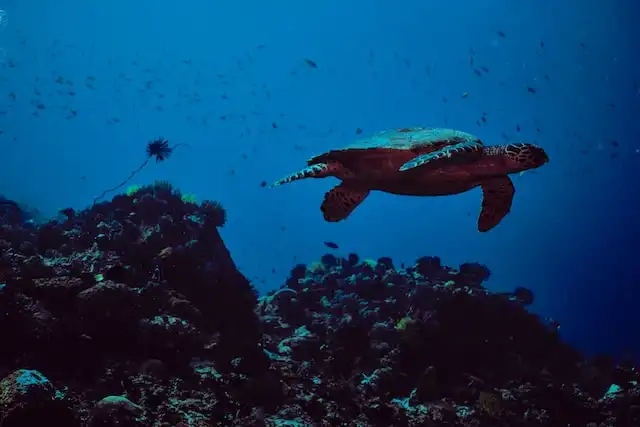
Dhigurah Beyru
Beautiful reef slope with excellent coral formations and abundant reef fish. Often combined with whale shark trips when conditions permit.
Depth: 5-25 meters | Level: Beginner to Intermediate
Best Time for Whale Shark Encounters
Peak Season (May - November)
The southwest monsoon brings plankton blooms that attract whale sharks in greater numbers:
- Highest concentration of sharks
- More surface feeding activity
- Higher chance of multiple encounters
- Slightly reduced visibility (15-25m)
- Possibility of rougher seas (boats have covered areas)
Special Events:
August-October often sees the highest numbers, with some days offering encounters with 5-10 different individuals. This is also when juvenile whale sharks are most frequently observed.
Off Season (December - April)
The northeast monsoon offers different advantages for whale shark encounters:
- Excellent visibility (30-40m)
- Calmer sea conditions
- Fewer boats and tourists
- Sharks may be deeper (better for divers)
- Still good encounter rates (60-70%)
Special Considerations:
While sharks are present year-round, they may spend more time at depth during these months. Snorkelers might have slightly shorter encounters, while divers may have better opportunities to observe sharks at cleaning stations.
Frequently Asked Questions
While you don't need to be an Olympic swimmer, basic swimming ability is required. The boats provide life jackets for those who want extra buoyancy. Currents are typically mild at the encounter sites. If you're not confident in the water, consider practicing snorkeling in calm lagoon areas before your whale shark excursion. Many Maldives resorts offer beginner snorkeling sessions.
You'll typically be within 3-10 meters (10-30 feet) of the sharks. Regulations require maintaining a minimum 3m distance from the shark's body and 4m from its tail. The sharks often swim closer on their own - remember not to approach them but let them come to you. Their sheer size makes them impressive even from a distance - a 6m whale shark appears enormous when swimming beside you!
Yes, most operators welcome children aged 8+ who are comfortable in the water. Some resorts offer family-friendly trips with extra safety measures. Children must be supervised by parents/guardians at all times. The calm conditions and opportunity to see these gentle giants make whale shark encounters unforgettable experiences for kids interested in marine life and nature.
Snorkeling is the primary way to encounter whale sharks as they often feed near the surface. Diving allows you to observe them at cleaning stations (where they hover motionless while small fish clean them) but requires advanced planning as sharks may not be present at depth when you dive. Most liveaboard dive trips combine both - snorkeling for whale sharks and diving at nearby reefs.
Whale Shark Point stands out for its year-round encounters (most locations are seasonal) and high probability of sightings. Unlike aggregations where sharks are baited (controversial practice), Maldives encounters are completely natural. The resident population means you're observing sharks in their true habitat rather than at feeding sites. The clear, warm waters and professional Maldives tour operators make for exceptionally comfortable viewing conditions compared to many other global sites.
Swim with Gentle Giants
Book your unforgettable whale shark encounter at one of the world's premier marine life viewing locations.
Explore Whale Shark Packages